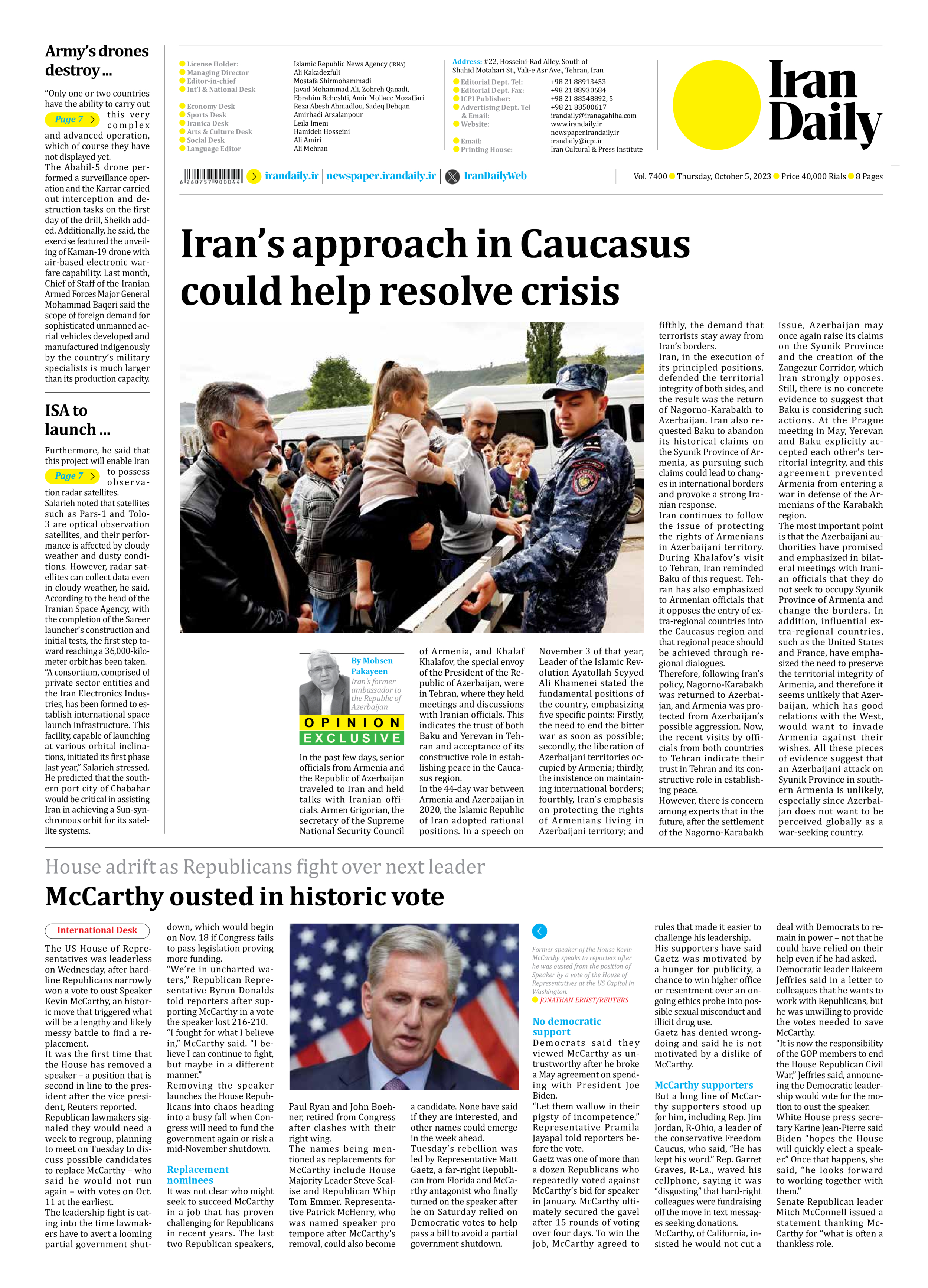
Copy in clipboard...
ISA to launch ...
Furthermore, he said that this project will enable Iran to possess observation radar satellites.
Salarieh noted that satellites such as Pars-1 and Tolo-3 are optical observation satellites, and their performance is affected by cloudy weather and dusty conditions. However, radar satellites can collect data even in cloudy weather, he said. According to the head of the Iranian Space Agency, with the completion of the Sareer launcher’s construction and initial tests, the first step toward reaching a 36,000-kilometer orbit has been taken.
“A consortium, comprised of private sector entities and the Iran Electronics Industries, has been formed to establish international space launch infrastructure. This facility, capable of launching at various orbital inclinations, initiated its first phase last year,” Salarieh stressed. He predicted that the southern port city of Chabahar would be critical in assisting Iran in achieving a Sun-synchronous orbit for its satellite systems.







